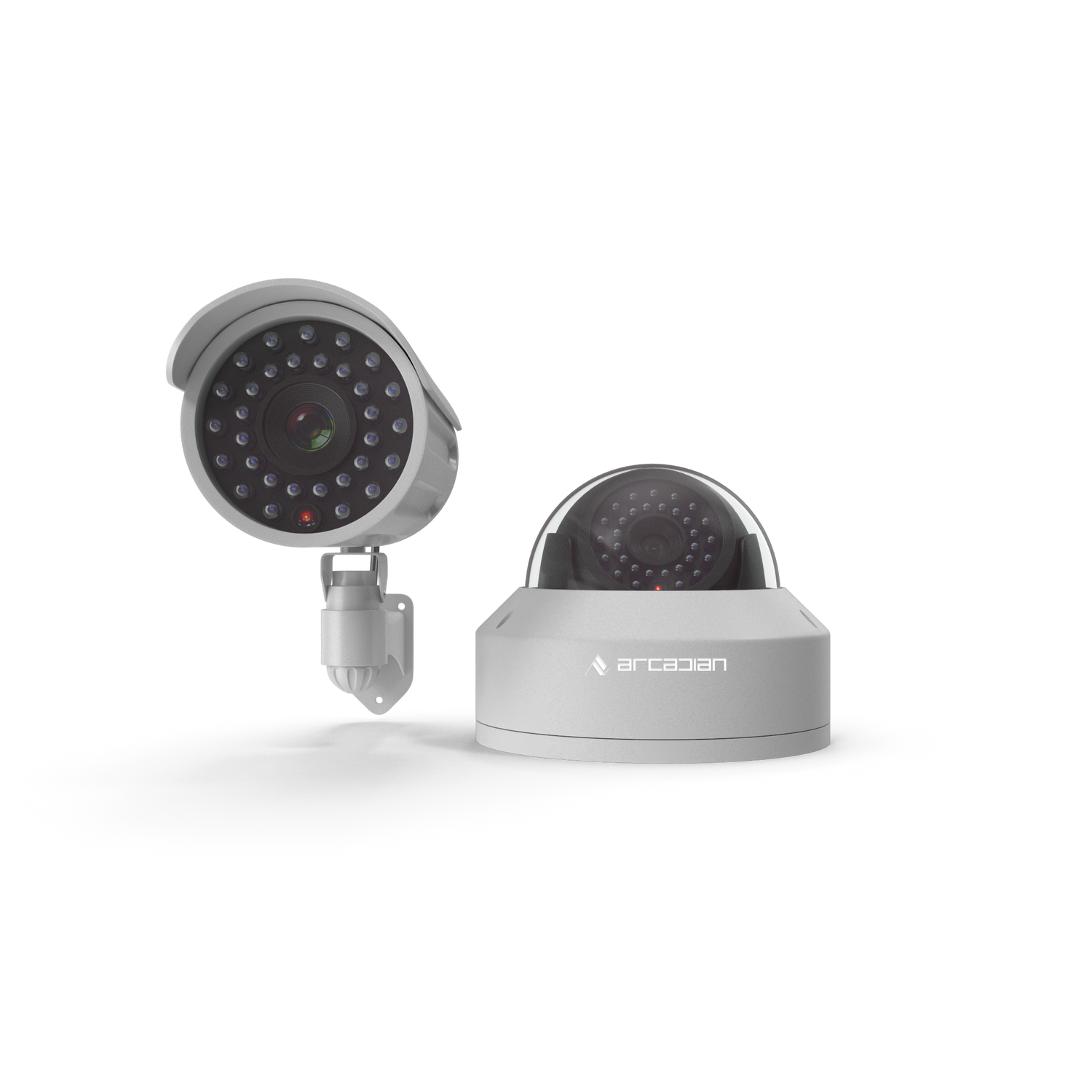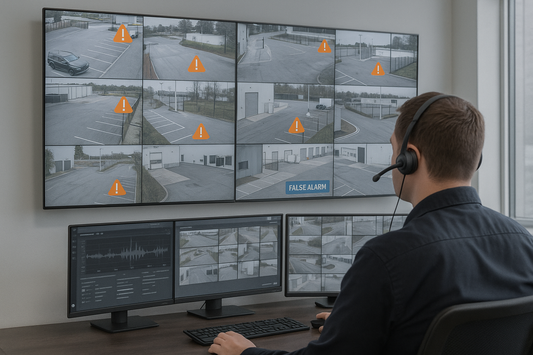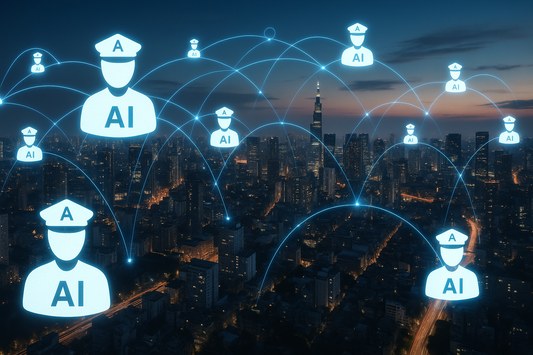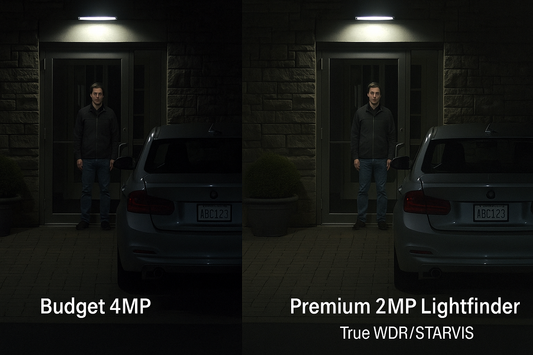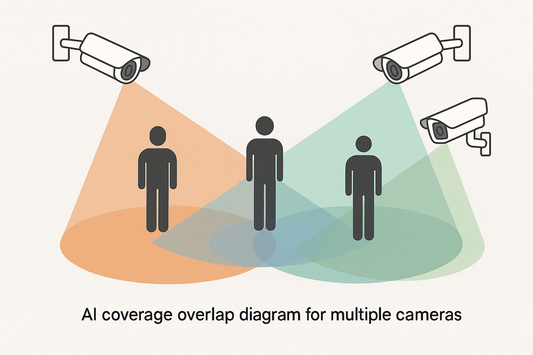When the World’s Most Watched Museum Wasn’t Watching: What the 2025 Louvre Robbery Teaches Us About the Future of Security
In October 2025, the world watched in disbelief as thieves looted the Louvre in broad daylight. Guards were threatened, alarms screamed, and yet the priceless jewels vanished. It wasn’t cowardice — it was latency. And that’s exactly what AI was built to fix.
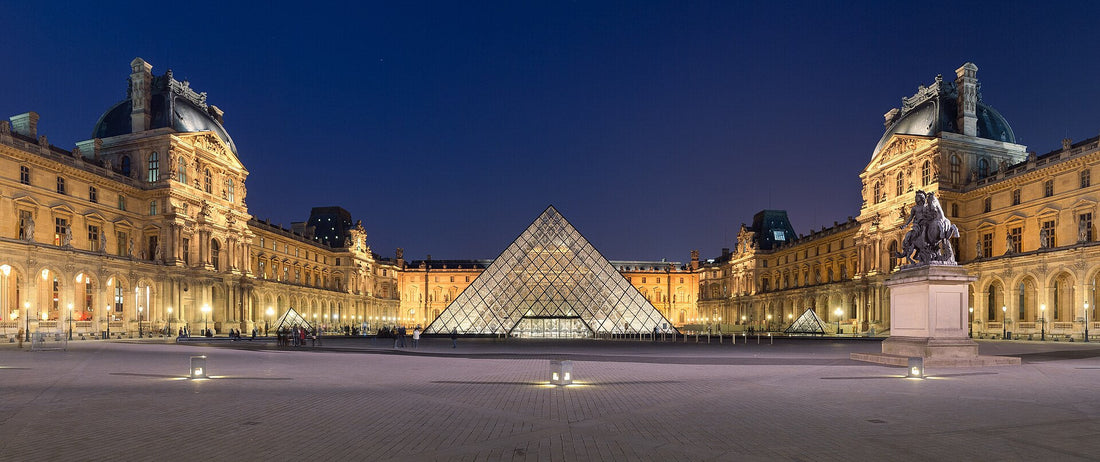
- 1. Introduction — The Day the Louvre Blinked
- 2. The Robbery Timeline — Fact by Fact
- 3. Why Traditional Security Failed
- 4. Lessons from History — Museums Keep Repeating This
- 5. The Psychology of Inaction — Why “Panic” Is the Wrong Word
- 6. How AI-as-a-Guard Would Have Changed the Louvre
- 7. Why Static Systems Keep Failing
- 8. The Economics of Vigilance
- 9. Case Study Simulation — Ranger vs Louvre Scenario
- 10. The Cultural Cost of Delay
- 11. Compliance, Privacy & Ethics
- 12. Frequently Asked Questions
- 13. Conclusion — Seconds Decide Civilization
1. Introduction — The Day the Louvre Blinked
October 19, 2025.
A quiet Paris morning turned into one of the most embarrassing days in museum history. Thieves in reflective vests climbed a mechanical lift, shattered a window, and plundered the Galerie d’Apollon — the room that houses the French Crown Jewels.
Seven minutes later, they were gone.
The alarms blared. Security scrambled. And the global press asked the same question:
How does the most guarded museum on Earth lose its treasures before anyone can even react?
This isn’t a story about courage. It’s about physics, bandwidth, and blind spots — the invisible lag between what a human sees, processes, and acts on.
ArcadianAI exists for that gap. Ranger, its AI-as-a-Guard platform, was built precisely for moments when seconds decide between prevention and history repeating itself.
2. The Robbery Timeline — Fact by Fact
All verified data below comes from Le Monde, BFMTV, Reuters, and The Guardian (October 19–20 2025).
| Time (CET) | Event |
|---|---|
| 09:27 | A rented hydraulic lift parks on the riverside façade near Porte des Arts. Men wearing reflective vests exit. Passers-by assume maintenance work. |
| 09:31 | Lift rises to second-floor window of Galerie d’Apollon. Glass shattered with angle grinder. |
| 09:32 | Guards respond to noise, confronted by three thieves wielding tools as weapons. They are threatened and step back per protocol. |
| 09:33 | Display case of crown jewels breached. Alarms triggered. |
| 09:34 | Guards attempt radio call; attackers retreat. |
| 09:36 | Vehicle departs the Seine embankment. |
| 09:39 | Police notified; perimeter sealed. Too late. |
Seven minutes.
Not because no one acted — because reaction traveled slower than intrusion.
3. Why Traditional Security Failed
3.1 The Human Limit
The guards did what humans are trained to do: preserve life, not property. Unarmed, outnumbered, and facing grinders, they followed protocol.
Yet in that same window, AI could have already:
-
Correlated multiple cameras detecting a hydraulic lift where none was scheduled.
-
Flagged reflective vests + unauthorized access pattern.
-
Triggered an escalating alarm before glass even broke.
3.2 The Alarm Myth
Modern alarm systems are reactive. By design, they wait for damage — motion, breakage, heat — then notify a human. In the Louvre’s case, by the time the sensors caught up, the jewels were gone.
3.3 The Understaffing Problem
Union statements (via Le Monde, Oct 20 2025) confirm security posts were understaffed after budget cuts. Even the largest museum in the world had blind zones — not in cameras, but in attention.
3.4 The Latency Equation
Average human detection + reaction time: 3–8 seconds.
Average human decision + communication delay: 20–30 seconds.
Robbery window: ≈ 240 seconds.
The math is merciless.
4. Lessons from History — Museums Keep Repeating This
| Year | Location | Incident | Outcome |
|---|---|---|---|
| 1990 | Isabella Stewart Gardner Museum (Boston) | Guards tricked by fake police | $500 million art still missing |
| 2019 | Dresden Green Vault (Germany) | Thieves cut bars & alarms | €100 million loss |
| 2025 | Louvre Museum (France) | Window breach via lift | Crown Jewels stolen |
Every time, the pattern is the same: overconfidence in physical presence, underinvestment in contextual intelligence.
5. The Psychology of Inaction — Why “Panic” Is the Wrong Word
Some tabloids accused the guards of freezing. But French BFMTV and TF1 Info make it clear: they were confronted and threatened.
Humans under direct threat revert to survival training. They aren’t lazy; they’re alive.
AI doesn’t panic. It doesn’t rationalize risk. It observes, calculates, and alerts instantly — without needing courage. That’s not replacing humanity; it’s reinforcing it.
6. How AI-as-a-Guard Would Have Changed the Louvre
Imagine Ranger deployed across the Louvre campus.
6.1 Phase 1 — Predictive Perimeter
-
Vehicle Anomaly Detection: identifies a hydraulic lift in a no-work zone.
-
Uniform Mismatch: reflective vests + non-registered faces.
-
Cross-Camera Correlation: tracks same objects through multiple angles (Observer → Alerter pipeline).
Outcome: alert within 30 seconds — before window break.
6.2 Phase 2 — Real-Time Threat Recognition
When tools appear or sparks flash, Ranger’s vision AI detects abrasion patterns and heat signatures indicating forced entry.
Instead of waiting for a broken glass sensor, Ranger would have flagged “mechanical cutting motion on perimeter surface.”
6.3 Phase 3 — Escalation and Containment
Ranger sends instant multi-channel alerts:
-
To on-site guards (via mobile app + dashboard).
-
To central monitoring center (e.g., Immix or SureView integration).
-
To emergency dispatch partners (e.g., RSPNDR).
By minute two, remote intervention would be in motion.
7. Why Static Systems Keep Failing
Traditional VMS vendors like Genetec or Milestone treat video as evidence — not intelligence.
VSaaS providers like Verkada focus on hardware control but not cross-camera awareness.
ArcadianAI’s Ranger operates above them: a camera-agnostic layer that turns every feed into a real-time sentinel.
Comparison Table
| Feature | Human Guards | Verkada | Genetec | ArcadianAI Ranger |
|---|---|---|---|---|
| Camera agnostic | No | No (proprietary) | Yes | ✅ Yes |
| Real-time AI event correlation | No | Limited | Limited | ✅ Full multi-camera |
| False-alarm reduction | Human error prone | 30–40 % | 40 % | ✅ 65 % + |
| Predictive anomaly detection | No | Partial | Moderate | ✅ Advanced |
| Case management pipeline | Manual | Basic | Intermediate | ✅ Observer → Alerter → Case Manager |
| ROI timeline | Slow | Moderate | Moderate | ✅ Fast (weeks) |
8. The Economics of Vigilance
Art theft costs the world ≈ $6 billion annually (Interpol 2024).
Average museum security budget in Europe: < 1.2 % of asset value.
The Louvre robbery proved that a $30 piece of glass guarded by a $20 million system is still a $10 million liability if context is missing.
AI doesn’t replace guards; it makes them superhuman — giving every camera a memory, every hallway a voice, and every incident a timeline before it becomes a headline.
9. Case Study Simulation — Ranger vs Louvre Scenario
| Event | Human Timeline | Ranger Timeline |
|---|---|---|
| Lift arrives | Ignored | Detected (Anomaly #001: Vehicle in restricted zone) 0 s |
| Window breach | Heard by guard 30 s later | Detected (Anomaly #002: cutting motion) 5 s |
| Alarms | Triggered at T + 120 s | Auto-escalation at T + 20 s |
| Police notified | T + 240 s | T + 40 s (via RSPNDR) |
| Exit | T + 420 s | Confrontation possible T + 60 s |
Even a two-minute acceleration could have stopped the robbers at the window.
10. The Cultural Cost of Delay
When security fails at a museum, the loss is civilizational.
A painting is not just a thing — it’s collective memory.
Yet the protocols protecting that memory are frozen in analog time.
AI doesn’t just guard assets; it preserves heritage.
ArcadianAI’s vision of “AI-as-a-Guard” means context-aware surveillance for cultural institutions without compromising privacy or ethics — no biometric tracking, no facial profiling, only event intelligence.
11. Compliance, Privacy & Ethics
-
GDPR / PIPEDA / SOC 2 Compliant: metadata-driven, not identity-driven.
-
NDAA Ready: no banned chipsets, no foreign telemetry.
-
Audit Trail: Every alert is time-stamped, contextualized, and non-editable.
Ethical AI security isn’t science fiction; it’s simply the only responsible future.
12. Frequently Asked Questions
1. Did the Louvre have AI surveillance before the robbery?
No confirmed AI analytics system was deployed; sources cite standard CCTV and motion alarms.
2. Why did guards not intervene?
They were threatened and unarmed; protocol prioritized safety over confrontation.
3. Could AI really have stopped it?
It could have detected the setup and escalated alerts before entry, cutting response time by ≈ 80 %.
4. How does Ranger integrate with existing systems?
Through ONVIF/RTSP feeds — no new hardware needed.
5. Is AI surveillance ethical in museums?
Yes when identity is anonymized and focus remains on behavior and context.
13. Conclusion — Seconds Decide Civilization
The Louvre robbery wasn’t a failure of bravery.
It was a failure of timing.
In 2025, humans could see — but couldn’t react fast enough.
In 2026 and beyond, AI can see, think, and act within milliseconds.
The lesson: Guarding heritage requires guarding time.
ArcadianAI’s Ranger gives security teams that time back — one frame at a time.
Security Glossary (2025 Edition)
| Term | Definition |
|---|---|
| AI-as-a-Guard | Cloud AI that analyzes video streams in real time to act as virtual security staff. |
| VSaaS | Video Surveillance as a Service — cloud-hosted CCTV management. |
| VMS | Video Management System for local recording and review. |
| NVR | Network Video Recorder — hardware storage for camera feeds. |
| False Alarm Filtering | AI process to ignore benign motion and reduce operator fatigue. |
| Anomaly Detection | Identification of non-routine behavior in video streams. |
| Event Correlation | Linking multiple camera inputs to detect complex events. |
| Observer → Alerter → Case Manager | ArcadianAI alert pipeline for detection, decision, and response. |
| NDAA | U.S. National Defense Authorization Act — restricts non-compliant hardware. |
| GDPR | EU privacy regulation governing data processing. |
| PIPEDA | Canadian privacy law on data handling. |
| SOC 2 | Security standard for cloud service providers. |
| Perimeter Intrusion | Unauthorized access to restricted areas. |
| Situational Awareness | Real-time understanding of environmental events. |
| Cloud-Native Security | Systems designed for scalable AI processing in the cloud. |
| ROI | Return on Investment — financial impact of security upgrades. |
*(Sources: Reuters, Le Monde, BFMTV, The

Security is like insurance—until you need it, you don’t think about it.
But when something goes wrong? Break-ins, theft, liability claims—suddenly, it’s all you think about.
ArcadianAI upgrades your security to the AI era—no new hardware, no sky-high costs, just smart protection that works.
→ Stop security incidents before they happen
→ Cut security costs without cutting corners
→ Run your business without the worry
Because the best security isn’t reactive—it’s proactive.
